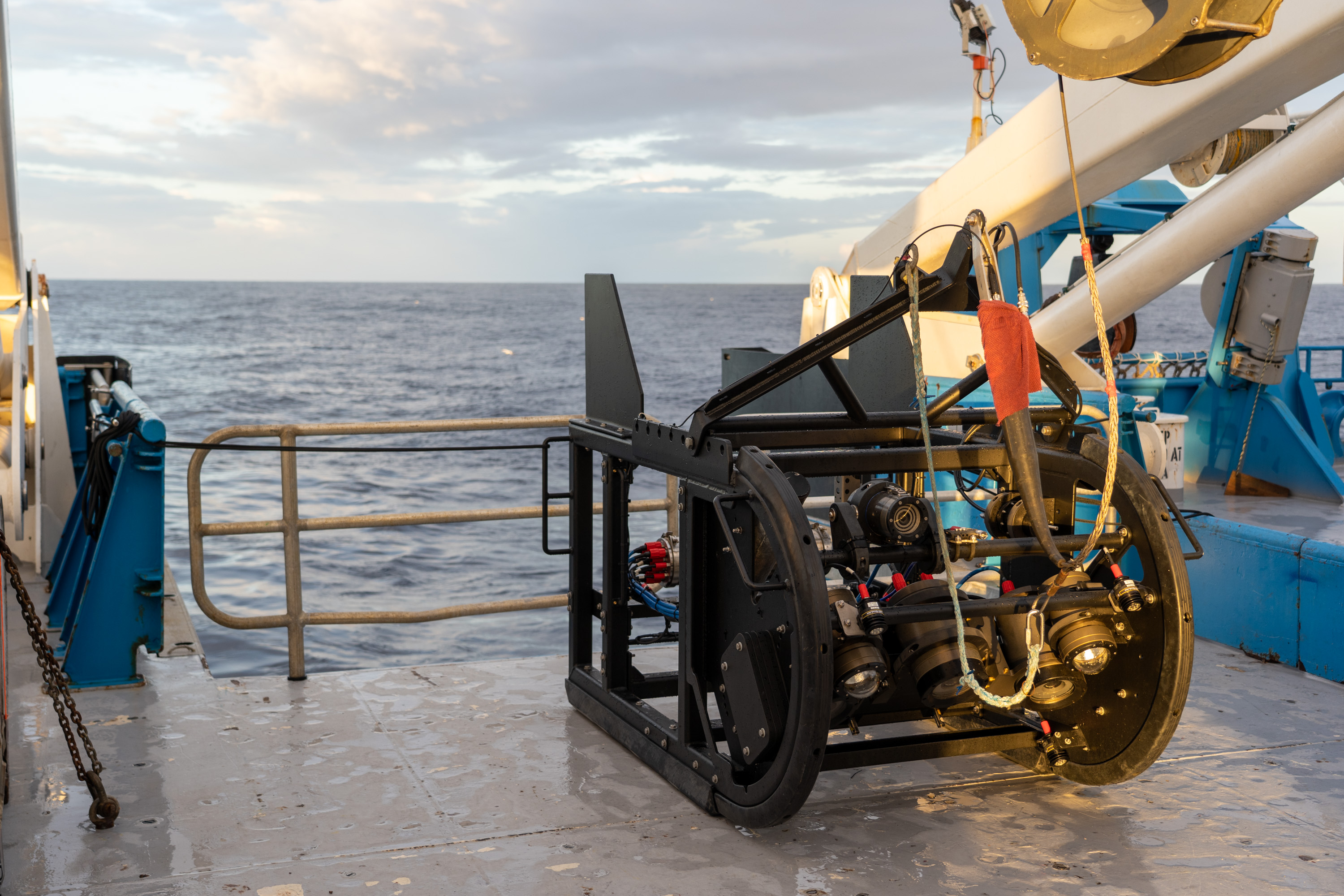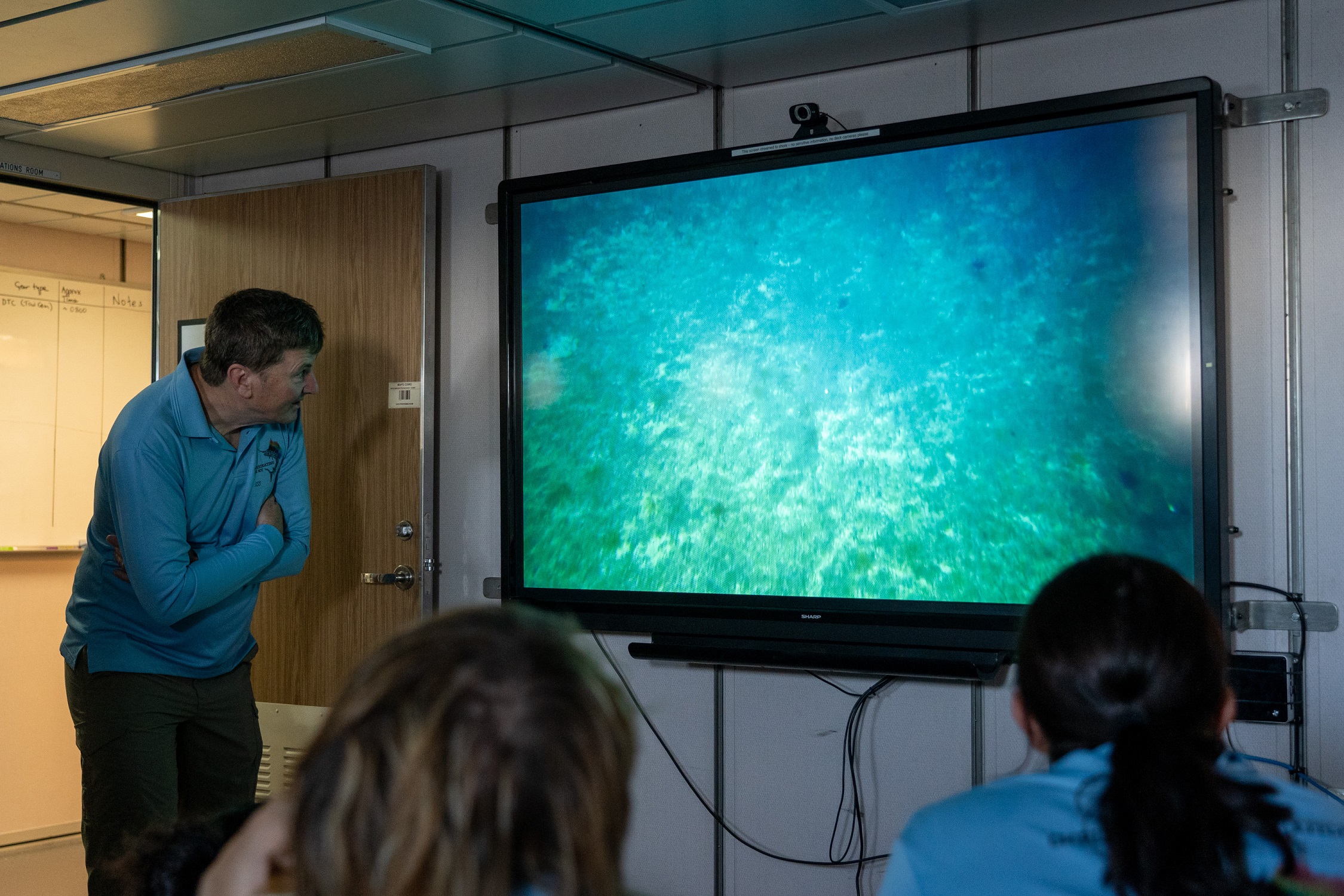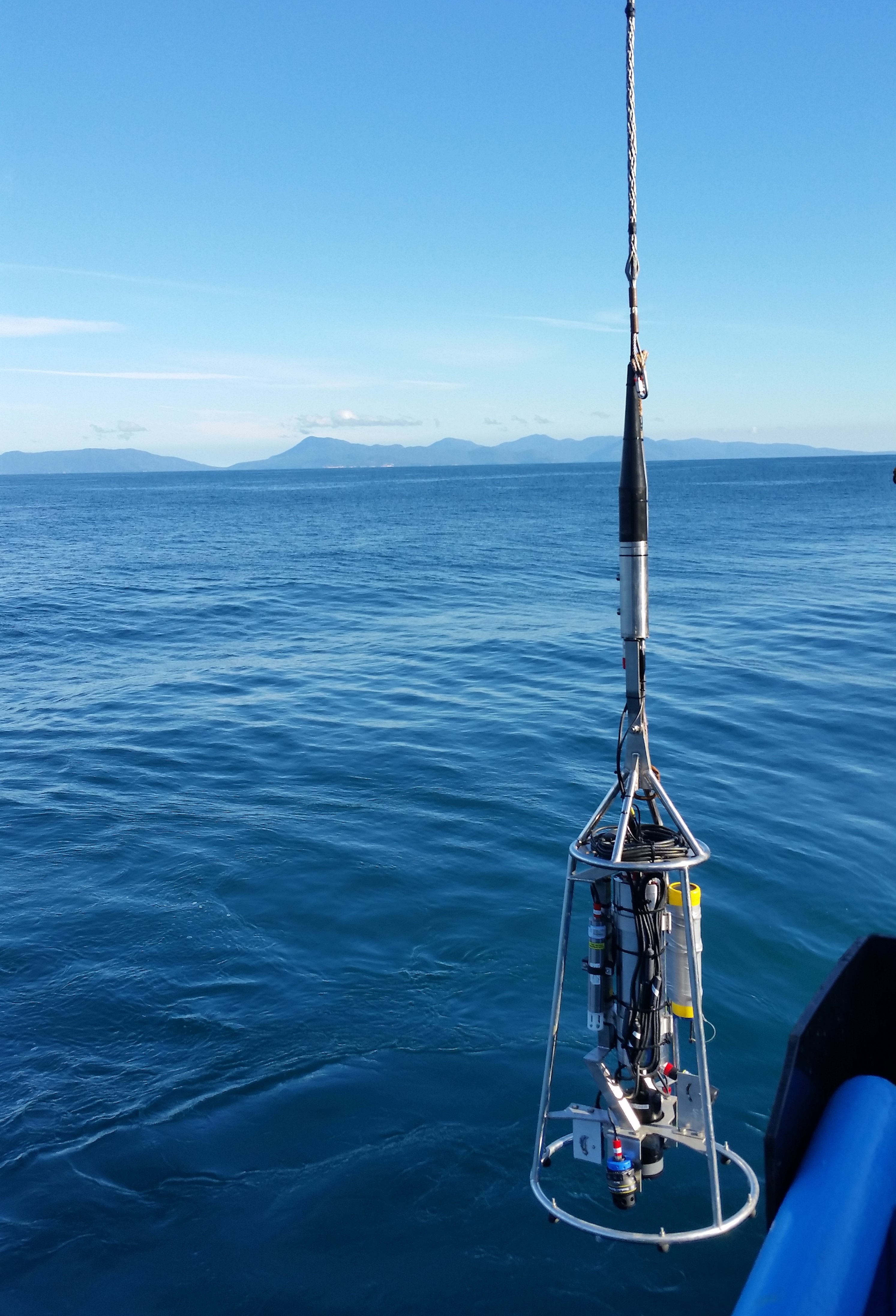What they're used for
 The deep towed camera can capture seafloor video and images, with the platform's current maximum operating depth being 3900 m. The data from deep towed camera can be used to identify and measure abundance of species, and visually survey the structure of the seafloor. Paired lasers are also fitted to the system for object sizing.
The deep towed camera can capture seafloor video and images, with the platform's current maximum operating depth being 3900 m. The data from deep towed camera can be used to identify and measure abundance of species, and visually survey the structure of the seafloor. Paired lasers are also fitted to the system for object sizing.
The drop camera can be lowered to a maximum operating depth of 5000 m. The camera can be used to investigate the structure and features (including shipwrecks) of the seafloor.
How they work
The deep towed camera is a submersible camera platform with still image and HD video cameras capable of taking high resolution imagery of the sea floor. This platform is towed behind the vessel while it is underway. When required, it can also be configured for use as a drop camera via vertical deployment.
The drop camera is a small submersible camera platform with two medium definition cameras built for quick deployment. This camera is deployed vertically from the vessel while it is stationary or moving only at slow speed.
Key features
Deep towed camera
 A forward-looking camera, long range altimeter and USBL position monitoring assist with the platform’s piloting, and a SBE37 CTD samples the water column temperature, salinity and dissolved oxygen during deployment, with control from a purpose built electrical housing.
A forward-looking camera, long range altimeter and USBL position monitoring assist with the platform’s piloting, and a SBE37 CTD samples the water column temperature, salinity and dissolved oxygen during deployment, with control from a purpose built electrical housing.
- 2 x Stereoscopic Sony Alpha 9 DSLR - live viewing and control
- Sony Alpha 9 1080p60 video - live HDSDI video streaming and recording
- 2 x Quantum strobe lights - remote controlled
- 4 x Deep Sea Power & Light floodlights – remote controlled
- Hitachi PAL forward camera
- Kongsberg-Mesotech 500m range altimeter
- SBE37 – live CTD data acquisition and monitoring
- 2 x OceanLASER size reference lasers
- Spare 12VDC/24VDC RS232 serial port for additional payloads
- Spare 12VDC/24VDC ethernet port for additional payloads
Drop camera

- 2 x Deep Sea Power & Light Seacam – wide remote viewing
- 2 x Deep Sea Power & Light Flood lights
- Kongsberg-Mesotech 500m range altimeter
- SBE37 – Live CTD data acquisition and monitoring
- Spare 12VDC/24VDC serial port for additional payloads
Considerations
Deep towed camera
The deep towed camera is deployed while the vessel is underway, and can only be deployed on a downhill/flat seafloor gradient and travelling towards open water (to allow sufficient space for recovery).
The platform can only be deployed with acceptable weather and sea-state conditions forecast for the entirety of the deployment. Additional power limits are available for added payloads and deployment duration is dependant on availability of technical staff.
The deep towed camera can also be reconfigured for deployment as a drop camera.
Drop camera
The drop camera is deployed as a vertical drop camera only.
The platform can only be deployed with acceptable weather and sea-state conditions forecast for the entirety of the deployment. Additional power limits are available for added payloads and deployment duration is dependant on availability of technical staff.
What they're used for
The deep towed camera can capture seafloor video and images, with the platform's current maximum operating depth being 3900 m. The data from deep towed camera can be used to identify and measure abundance of species, and visually survey the structure of the seafloor. Paired lasers are also fitted to the system for object sizing.
The drop camera can be lowered to a maximum operating depth of 5000 m. The camera can be used to investigate the structure and features (including shipwrecks) of the seafloor.
How they work
The deep towed camera is a submersible camera platform with still image and HD video cameras capable of taking high resolution imagery of the sea floor. This platform is towed behind the vessel while it is underway. When required, it can also be configured for use as a drop camera via vertical deployment.
The drop camera is a small submersible camera platform with two medium definition cameras built for quick deployment. This camera is deployed vertically from the vessel while it is stationary or moving only at slow speed.
Key features
Deep towed camera
A forward-looking camera, long range altimeter and USBL position monitoring assist with the platform’s piloting, and a SBE37 CTD samples the water column temperature, salinity and dissolved oxygen during deployment, with control from a purpose built electrical housing.
- 2 x Stereoscopic Sony Alpha 9 DSLR - live viewing and control
- Sony Alpha 9 1080p60 video - live HDSDI video streaming and recording
- 2 x Quantum strobe lights - remote controlled
- 4 x Deep Sea Power & Light floodlights – remote controlled
- Hitachi PAL forward camera
- Kongsberg-Mesotech 500m range altimeter
- SBE37 – live CTD data acquisition and monitoring
- 2 x OceanLASER size reference lasers
- Spare 12VDC/24VDC RS232 serial port for additional payloads
- Spare 12VDC/24VDC ethernet port for additional payloads
Drop camera
A long range altimeter and USBL position monitoring assist with the platform’s piloting, and a SBE39 CTD samples the water column during deployment, with everything controlled by a purpose built electrical housing.
- 2 x Deep Sea Power & Light Seacam – wide remote viewing
- 2 x Deep Sea Power & Light Flood lights
- Kongsberg-Mesotech 500m range altimeter
- SBE37 – Live CTD data acquisition and monitoring
- Spare 12VDC/24VDC serial port for additional payloads
Considerations
Deep towed camera
The deep towed camera is deployed while the vessel is underway, and can only be deployed on a downhill/flat seafloor gradient and travelling towards open water (to allow sufficient space for recovery).
The platform can only be deployed with acceptable weather and sea-state conditions forecast for the entirety of the deployment. Additional power limits are available for added payloads and deployment duration is dependant on availability of technical staff.
The deep towed camera can also be reconfigured for deployment as a drop camera.
Drop camera
The drop camera is deployed as a vertical drop camera only.
The platform can only be deployed with acceptable weather and sea-state conditions forecast for the entirety of the deployment. Additional power limits are available for added payloads and deployment duration is dependant on availability of technical staff.
